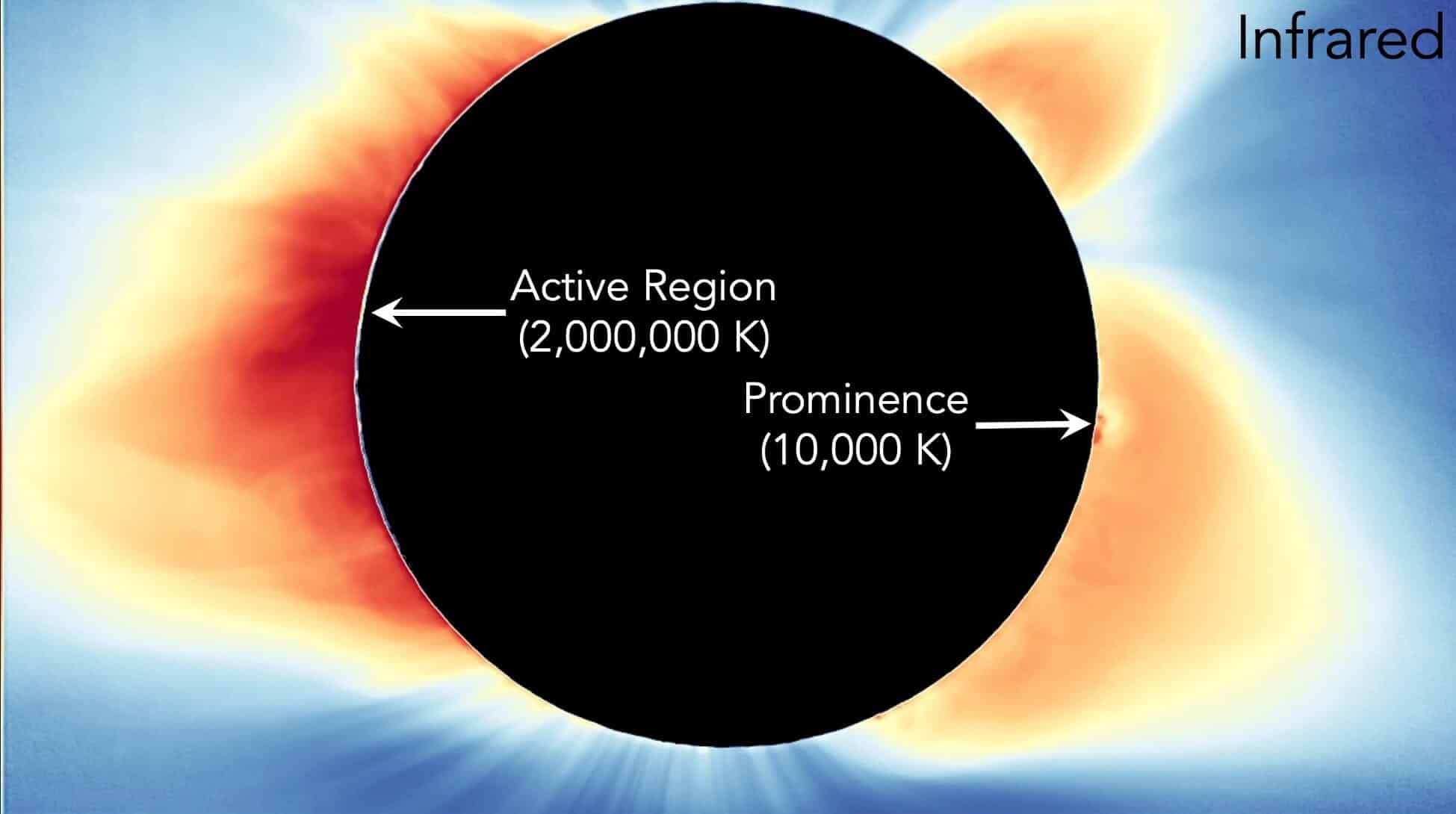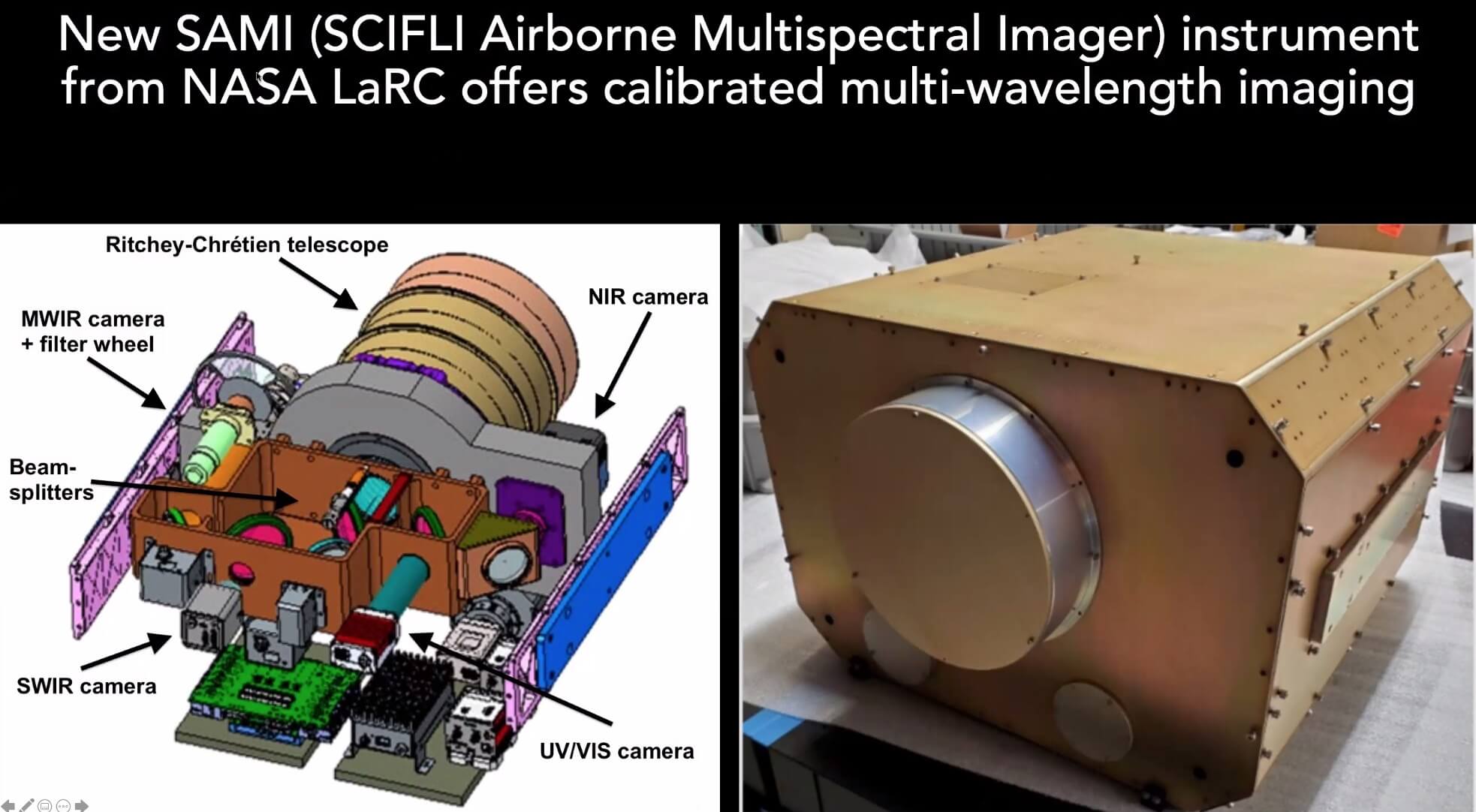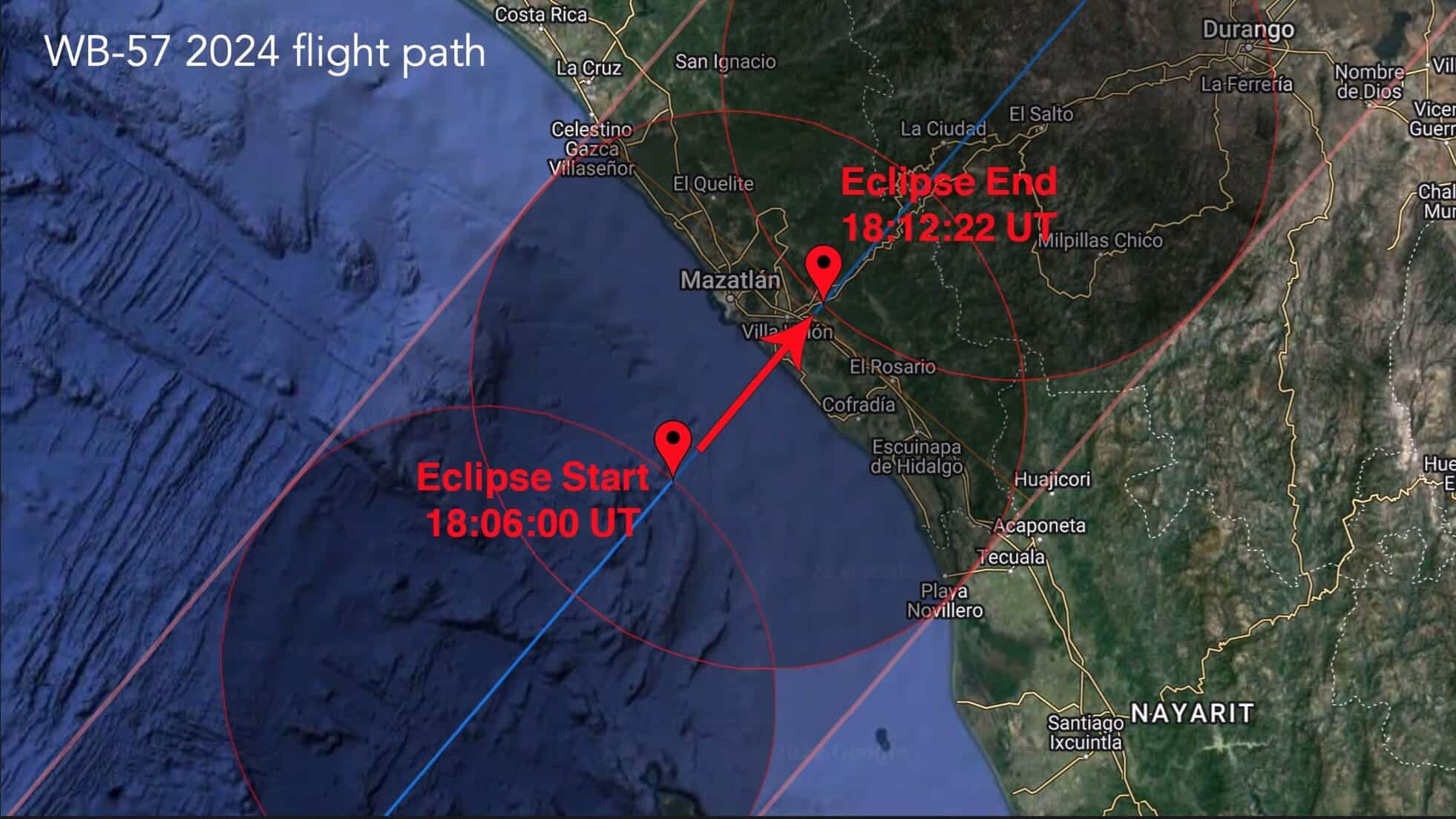Prof. Caspi, from the University of Colorado presents the results of the experiments in the solar eclipse of 2017, on the multi-channel camera that will fly on a NASA plane WB-57

A solar eclipse is an extremely rare phenomenon, that in any specific area on Earth it may occur only once during hundreds of years. But despite its rarity, in the vast territory of the United States, total solar eclipses occur relatively often. This will happen again on April 8, 2024, seven years and four months after the last solar eclipse observed in the US.
This rare opportunity, in which the globular moon blocks the sun's bright light for a few minutes, allows researchers to get a unique view of the sun's corona. Scientists intend to take advantage of this rare research opportunity in order to uncover and investigate the mysterious phenomena occurring in the corona.
One of them is Prof. Amir Caspi, a researcher born in Israel and the chief scientist at the SOUTHWESTERN Research Institute in Boulder, Colorado, in the United States. He is one of the scientists who won a special grant from NASA to conduct unique scientific research on high-altitude aircraft during the upcoming solar eclipse. Caspi took advantage of a similar opportunity during the previous solar eclipse that occurred in 2017, and then he and his team revealed a surprising and fascinating finding by photographing the corona in the infrared field.
As I recall, we interviewed Prof. Caspi before the previous eclipse, in 2017. He won againA NASA competition to conduct research on these aircraft in the current eclipse. In an interview with the science website, he tells what the new discoveries were and what they hope to discover this time with improved equipment.
Surprising find: buildings warm And colds glow in a similar way

The use of advanced infrared cameras installed on NASA aircraft revealed to Caspi and his colleagues a mysterious phenomenon in the solar corona during the 2017 eclipse. Two main types of different structures were identified in the corona: "active regions" - areas of hot plasma at millions of degrees Celsius, and "prominences" - Relatively cool plasma clouds.
Despite the huge and extreme differences in the temperatures prevailing in these two types of structures, they exhibited a very similar glow in the infrared - a phenomenon that was extremely surprising to Caspi and his team. "According to the existing physical theories, we expected that such hot structures would produce infrared radiation completely different from that of colder structures," Caspi explained. "But the fact that their infrared is largely similar to each other suggests that the physics driving their glow phenomenon is different from what we thought so far."
This surprising discovery, that structures with such extreme temperatures exhibit a similar glow, raised new fundamental questions: What are the unusual physical processes that cause this? Are there perhaps currently unknown mechanisms that can produce a similar glow in buildings whose temperatures are so different?
"This strange discovery showed us that there is much more to discover about the complex physics that governs the Sun's corona," Caspi emphasized. "The current theories simply have not been able to explain this surprising phenomenon, so we must remain open to new and surprising discoveries that may challenge the existing understanding and lead us to a new understanding."
An innovative device for studying the secrets of the crown

To unravel the mystery of the glow similar to buildings with such different temperatures, Prof. Caspi plans to go up during the next solar eclipses of 2024 and 2027 with an innovative and advanced device called SEMI (Solar Eco-Coronal Imaging Facility).
SEMI is actually a special telescope equipped with four cameras that will photograph the corona at the same time in seven different wavelengths - from visible light to the far infrared range. Each of the cameras is designed for a specific spectral domain, which will enable a comprehensive investigation of the various structures in the corona according to the distribution of their spectral radiation.
Each wavelength captures and illustrates a certain temperature range of the hot plasma in the corona. For example, the visible light shows the relatively cold parts of the corona, while the far infrared shows the hottest regions by millions of degrees. By photographing the corona in a wide range of wavelengths, it will be possible to identify, characterize and study diverse plasmatic structures with a wide temperature range.
In addition, comparing the images at different wavelengths will allow identification of the different sources of radiation emitted from the same building. This may reveal different physical mechanisms responsible for the glow at different wavelengths, even if the structure itself looks similar to the eye.
Real-time dynamics: a penetrating look into plasma clouds

Another significant advantage of the SEMI device is its high shooting rate - 30 photos per second. This ability will allow for the first time not only to view a static image of the various structures in the crown, but also to view the dynamics and processes occurring in them in real time.
"Using the spectrum and dynamics data that will be obtained from the SEMI instrument, we hope to unravel the mystery of the various mechanisms that drive the similar but so different glow of the hot and cold structures in the corona," Caspi said. Unraveling this mystery will deepen our knowledge of the physics of plasma at extreme temperatures, contributing to a better understanding of the complex processes occurring in the Sun and similar stars.
A view from the ground: extensive scientific collaboration to reveal the 3D dimension
At the same time as observations from the air, Caspi plans to conduct a unique ground experiment along the path of the 2024 solar eclipse that will cross the United States. As part of this experiment, 35 volunteer teams will be stationed at various points along the path of the eclipse, starting from the border area between Mexico and Texas to the Canadian border.
Each of the teams will be equipped with a telescope and a special camera focused on photographing polarized light. These cameras include a series of photometric filters that allow the crown to be photographed in four different polarization directions of the light radiation (0, 45, 90 and 135 degrees). By combining the images from the different directions, it will be possible for the first time to extract important and accurate information about the three-dimensional structure, density and strength of the magnetic field of the various plasma clouds that make up the corona.
Each team will get about 4 minutes of observation during the peak of the eclipse. However, thanks to the overlap between the different teams along the path, Caspi and his team will be able to have a continuous sequence of observations of close to a full hour on the crown buildings.
This extended observation time, combined with the ability to see the full 3D structure for the first time, is expected to provide unprecedented information on the geometry and dynamics of the various plasma structures in the corona.
After receiving the data, Caspi and his colleagues intend to combine the images from all the teams into a continuous "film" documenting the changes in the structure of the corona throughout all phases of the eclipse. "This innovative ability to see the structures from different angles and over an extended period of time is expected to reveal new insights into how the plasma and magnetic fields are shaped and change during the rare phenomenon of a solar eclipse," Caspi noted.
Many researchers and citizen scientists are planning experiments
The solar eclipse of 2024 is expected to attract dozens of additional research groups from around the world, who will take advantage of this rare opportunity to conduct a variety of scientific experiments and investigations. Different groups will study the effect of the eclipse on different animals, others will monitor the effect on the atmosphere and ionosphere, and other groups will collect photographs from the general public using smartphone cameras.
The concentration of the various research efforts promises to significantly deepen our understanding of the complicated and mysterious processes taking place in the Sun's corona, and to present new horizons to contemporary science with regard to stars and their hot plasma.
More of the topic in Hayadan:
- Technion researchers offer a solution to a long-standing mystery in the sun
- Touch the sun: NASA will launch a spacecraft closer than ever to the sun
- April 8, 2024 Total Solar Eclipse: Wider Path, Longer Duration, and Increased Solar Activity
- NASA's SDO (Solar Dynamic Observatory) spacecraft photographed the sun "smiling"
- The solar eclipse may confuse the behavior of the birds

One response
The whole world is rising against us because of the Iron Ruins War. Some even run programs in Europe and the USA. Many imposed an arms and ammunition embargo against us.
So please stop being stupid and solve the problems of poverty and other problems of human existence. We are rewarded the other way around! It is about the anti-Semitic Christian community in Europe to this day. They prefer the Muslims who screw them over the head.